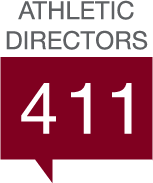In the ever-evolving world of athletic programs, the success of a team hinges not only on the talent of its players but also on the expertise and development of its staff. Professional development for athletic program staff is essential for fostering an environment where athletes can thrive and perform at their best.
The Crucial Role of Professional Development
Professional development for athletic staff encompasses a wide range of activities designed to enhance their skills, knowledge, and effectiveness. This includes attending workshops, pursuing certifications, engaging in peer networking, and staying updated with the latest trends and technologies in sports.
1. Enhancing Coaching Techniques
Professional development provides coaches with the latest strategies and techniques, which can significantly impact team performance. Advanced training in game theory, sports psychology, and modern coaching methods equips coaches with the tools to develop well-rounded athletes.
2. Improving Athlete Well-being
Training in areas such as mental health, nutrition, and injury prevention is crucial. Understanding the psychological pressures athletes face and knowing how to address them can improve their overall well-being and performance. Nutrition and injury prevention programs help in maintaining athletes’ physical health.
3. Staying Current with Trends and Technologies
The sports industry is continuously evolving with new technologies and methodologies. Professional development ensures that staff members stay current with these advancements, such as the use of analytics for performance tracking or virtual reality for training simulations.
Benefits Backed by Data
Studies highlight the tangible benefits of professional development. According to the National Federation of State High School Associations (NFHS), schools that invest in staff development see a notable increase in student-athlete performance and team cohesion. Historical success stories from renowned programs, such as UCLA and Duke, underscore the importance of ongoing staff education and development.
Steps for Implementing Professional Development
1. Identify Needs
Conduct surveys or hold meetings to understand the specific professional development needs of your staff. This helps in tailoring programs that address real issues and gaps in knowledge.
2. Create a Strategic Plan
Develop a comprehensive professional development plan that includes a variety of learning opportunities, such as workshops, online courses, conferences, and peer mentoring. A well-rounded plan ensures that all aspects of professional growth are covered.
3. Allocate a Budget
Ensure that there is a dedicated budget for professional development activities. Financial support demonstrates a commitment to staff growth and encourages participation.
4. Encourage Participation
Foster a culture that values learning by incentivizing attendance at professional development events. Recognition and rewards for participation can motivate staff to engage in continuous learning.
5. Provide Resources
Offer access to educational materials, online learning platforms, and professional networks. Resources like these make it easier for staff to pursue development opportunities.
6. Evaluate and Adapt
Regularly assess the effectiveness of the professional development initiatives and make adjustments as needed. Feedback from staff can provide valuable insights into how the programs can be improved.
Looking to the Future
The future of athletic program success lies in the continuous development of its staff. Emerging technologies such as virtual reality for coaching clinics and AI-driven feedback systems hold the potential to revolutionize professional development. Athletic directors must stay ahead of these trends to ensure their programs remain competitive.
Investing in professional development for athletic program staff is not just an option but a necessity for achieving long-term success. By enhancing coaching techniques, improving athlete well-being, and staying current with trends, athletic directors can build a strong foundation for their programs. Through a strategic and committed approach to professional development, athletic programs can thrive, creating a lasting legacy of excellence.




